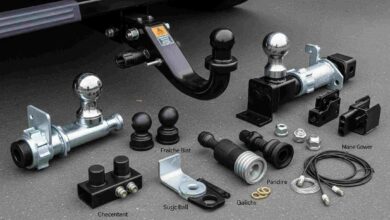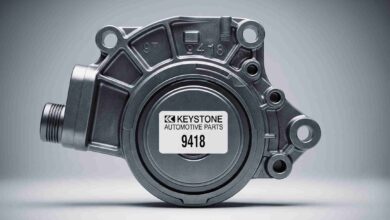A Deep Dive into the Versatile jkuhrl-5.4.2.5.1j Model: What You Need to Know

In today’s fast-evolving tech and engineering landscape, the jkuhrl-5.4.2.5.1j model has become a standout reference point for professionals and enthusiasts alike. Known for its precision, reliability, and multi-industry application, this model is increasingly relevant in sectors ranging from mechanical design to advanced software integration. But what exactly is it, and why is it gaining so much attention?
This article explores the functionality, applications, benefits, and future potential of the jkuhrl-5.4.2.5.1j model, all while helping you understand how it fits into modern workflows.
Understanding the jkuhrl-5.4.2.5.1j Model
The jkuhrl-5.4.2.5.1j model is a modular system or digital reference framework that integrates complex functionalities into a singular interface or design. While its naming convention might seem complex, the structure behind the model follows a logical, standardized protocol that allows for streamlined integration into various systems.
Key Features and Specifications
- Modular architecture for ease of upgrade
- Cross-platform compatibility
- High-precision data calibration
- Open API support for third-party integrations
Whether used in industrial settings or advanced computational models, the jkuhrl-5.4.2.5.1j is valued for its adaptability and performance reliability under different environmental or operational conditions.
Applications Across Industries
The real value of this model lies in its versatile use across multiple industries. It is not limited to a single function, which is why companies and research institutions are increasingly adopting it in their workflows.
Sectors That Benefit Most
- Engineering & Manufacturing: Streamlining mechanical simulations and prototyping
- Data Analytics: Integrating with predictive modeling tools
- Automation Systems: Used in both robotic programming and smart factory setups
- IoT Platforms: Acts as a middle-layer for sensor data management
In each of these applications, the jkuhrl-5.4.2.5.1j model acts as a backbone for accuracy, scalability, and advanced performance.
How It Compares to Other Models
When comparing performance and adaptability, the jkuhrl-5.4.2.5.1j model often outshines older or less flexible frameworks. While legacy systems may provide foundational stability, they frequently lack the modular customization that modern applications demand.
Competitive Advantages
- Faster deployment times due to plug-and-play compatibility
- Less downtime during updates or changes
- Greater security measures and real-time monitoring options
- Enhanced compatibility with cloud-based environments
Thanks to these advantages, the jkuhrl-5.4.2.5.1j model is considered a forward-looking choice for companies aiming to future-proof their technological infrastructure.
Installation, Setup, and Maintenance
One of the most attractive aspects of this model is its straightforward setup and minimal maintenance requirements. Whether you’re a tech-savvy engineer or a team lead deploying systems across departments, the setup process is user-friendly and intuitive.
Installation Overview
- Unpack and verify components or digital files
- Run the configuration utility or installation wizard
- Connect to existing platforms or databases
- Test using built-in diagnostics
For long-term maintenance, the model comes with documentation and support modules that simplify updates, bug tracking, and performance assessments.
Customization and Scalability Potential
Perhaps one of the biggest selling points of the jkuhrl-5.4.2.5.1j model is its scalability. As systems grow, businesses require adaptable tools that won’t need complete overhauls. This model is built with scalability in mind, making it a favorite among system architects and IT planners.
Real-World Use Cases
- Businesses scaling from local to international infrastructure
- Research labs evolving their data collection platforms
- Enterprises developing multi-stage automation setups
Its ability to integrate with microservices and support cloud-native design principles ensures that the model remains viable as tech stacks evolve.
FAQ
What is the primary use of the jkuhrl-5.4.2.5.1j model?
It is primarily used for modular integration in data systems, automation, and high-precision engineering processes.
Is this model suitable for cloud-based platforms?
Yes, it supports cloud-native architecture and can integrate easily with AWS, Azure, or private cloud solutions.
How secure is the jkuhrl-5.4.2.5.1j model?
It includes end-to-end encryption, user authentication protocols, and audit logs for maximum security.
Can it be modified or customized?
Absolutely. The modular design allows for custom APIs, tailored workflows, and user-specific configurations.
Is it beginner-friendly?
Yes, while it’s built for advanced performance, the intuitive setup and user interface make it accessible to intermediate users as well.
Conclusion: Why the jkuhrl-5.4.2.5.1j Model Is Worth the Hype
In a landscape where performance, adaptability, and reliability are non-negotiable, the jkuhrl-5.4.2.5.1j model offers a comprehensive solution. From its flexible integration options to its strong performance under varied conditions, it meets the needs of both enterprise-level operations and smaller, specialized projects.
If you’re looking to future-proof your systems or upgrade to a model that can evolve with your needs, this one deserves serious consideration. Backed by strong support documentation, security features, and real-world success stories, the jkuhrl-5.4.2.5.1j model is more than a product—it’s a scalable solution that grows with you.



